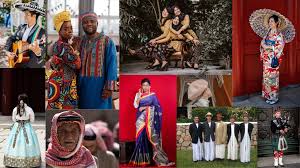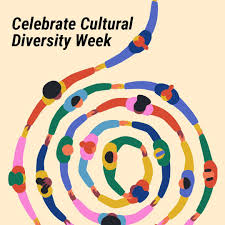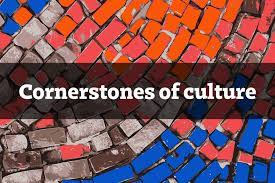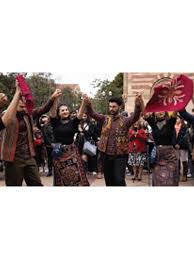Embracing the Timeless Beauty of Traditional Armenian Culture

The Beauty of Traditional Armenian Culture
Armenia, a land rich in history and tradition, boasts a vibrant culture that has been passed down through generations. From its ancient rituals to its distinctive music and dance, traditional Armenian culture is a testament to the enduring spirit of its people.
One of the most beloved aspects of Armenian tradition is its cuisine. With dishes like dolma, khorovats (barbecue), and lavash bread, Armenian food is a true reflection of the country’s agricultural heritage and culinary prowess. Each meal is a celebration of local produce and time-honoured recipes that have stood the test of time.
Music also plays a vital role in Armenian culture, with traditional instruments like the duduk producing hauntingly beautiful melodies that speak to the soul. Whether it’s the lively tunes of a traditional dance or the mournful strains of a lullaby, Armenian music captures the essence of the country’s rich cultural tapestry.
Armenian craftsmanship is another hallmark of traditional culture, with artisans creating intricate carpets, ceramics, and textiles that showcase centuries-old techniques and designs. These handmade treasures not only serve as decorative pieces but also as symbols of Armenia’s artistic heritage.
Throughout Armenia, festivals and celebrations are held to honour traditions and bring communities together. From religious events like Easter and Vardavar to secular festivities such as Navasard, Armenians take pride in preserving their cultural heritage through these joyous occasions.
In essence, traditional Armenian culture is a living testament to the resilience and creativity of its people. By embracing their past while looking towards the future, Armenians continue to uphold their cherished customs and ensure that their heritage remains vibrant for generations to come.
Exploring Armenian Traditions: Food, Music, Crafts, Festivals, and More
- What is traditional Armenian food like?
- How is traditional Armenian music different from modern music?
- What are some traditional Armenian crafts and artworks?
- Are there any traditional festivals or celebrations in Armenia?
- What role does tradition play in Armenian weddings?
- Can you explain the significance of traditional clothing in Armenian culture?
- How have traditional Armenian dances evolved over time?
- What are some popular traditions associated with New Year’s Eve in Armenia?
What is traditional Armenian food like?
Armenian cuisine is a delightful blend of flavours and textures that reflect the country’s rich culinary heritage. Traditional Armenian food is characterised by its use of fresh ingredients such as fruits, vegetables, herbs, and meats, all sourced locally. From hearty stews like khash to delicate pastries like gata, Armenian dishes are known for their bold flavours and intricate preparation methods. Grilled meats, flatbreads, and an array of mezes (appetisers) are also staples of Armenian cuisine, offering a diverse range of tastes to tantalise the palate. Whether enjoying a festive meal or a simple family gathering, traditional Armenian food is a true embodiment of the country’s cultural identity and hospitality.
How is traditional Armenian music different from modern music?
Traditional Armenian music is deeply rooted in the country’s rich cultural heritage, drawing inspiration from centuries-old melodies and instruments. Unlike modern music, which often incorporates contemporary trends and technologies, traditional Armenian music maintains a distinct sound characterised by the use of traditional instruments like the duduk and tar. The lyrical themes in traditional Armenian music often revolve around folklore, history, and nature, reflecting the deep connection Armenians have with their land and traditions. While modern music may experiment with different genres and styles, traditional Armenian music remains a timeless treasure that continues to evoke emotions and memories of a bygone era.
What are some traditional Armenian crafts and artworks?
Armenia is renowned for its rich tradition of crafts and artworks, showcasing exquisite craftsmanship and artistic expression. Some notable traditional Armenian crafts include intricate carpet weaving, known for its vibrant colours and intricate patterns that tell stories of the region’s history. Additionally, Armenian ceramics feature distinctive designs inspired by nature and ancient motifs, reflecting the country’s cultural heritage. Another prominent art form is khachkar carving, where intricately carved stone crosses serve as symbols of faith and artistic mastery. These traditional Armenian crafts and artworks not only demonstrate the skill and creativity of the artisans but also embody the deep-rooted cultural significance that continues to thrive in Armenia today.
Are there any traditional festivals or celebrations in Armenia?
Armenia is steeped in a rich tapestry of traditional festivals and celebrations that reflect the country’s cultural heritage and community spirit. From religious observances like Easter and Christmas to secular events such as Vardavar and Navasard, Armenians have a deep-rooted tradition of coming together to commemorate special occasions with music, dance, and feasting. These festive gatherings not only serve as a time for merriment and joy but also as an opportunity to honour age-old customs and rituals that have been passed down through generations. The vibrant colours, lively music, and heartfelt camaraderie found at these traditional Armenian festivals offer a glimpse into the soul of this ancient land and its people.
What role does tradition play in Armenian weddings?
Tradition plays a significant role in Armenian weddings, serving as a cornerstone of the celebration and uniting families through time-honoured customs. From the intricate rituals of the Khosk-Kap (engagement) ceremony to the joyous festivities of the Kavor (wedding) ceremony, every aspect of an Armenian wedding is steeped in tradition. Symbolic gestures like the Blessing of the Crowns, where the couple’s heads are adorned with crowns to signify their new roles as king and queen of their own family, highlight the importance of heritage and cultural values in this special occasion. Through these age-old practices, Armenian weddings not only honour the past but also create lasting memories that connect generations and strengthen familial bonds.
Can you explain the significance of traditional clothing in Armenian culture?
Traditional clothing holds significant cultural importance in Armenian culture, serving as a visual representation of the country’s rich heritage and identity. Each garment, from the intricate patterns of the taraz to the distinctive designs of the headdress, reflects centuries-old traditions and craftsmanship passed down through generations. Armenian traditional clothing not only showcases the artistry and skill of local artisans but also symbolises cultural pride and connection to the country’s history. Wearing traditional attire during special occasions and celebrations is a way for Armenians to honour their roots and preserve their unique cultural legacy for future generations.
How have traditional Armenian dances evolved over time?
Traditional Armenian dances have evolved over time through a fascinating blend of historical influences and cultural adaptations. Rooted in ancient rituals and celebrations, Armenian dances have undergone transformations that reflect the changing dynamics of society while retaining their essence. From the graceful movements of the Kochari to the energetic steps of the Tamzara, each dance tells a story of tradition and innovation. Over the centuries, these dances have been passed down through generations, with subtle variations emerging to suit different regions and occasions. Today, traditional Armenian dances continue to captivate audiences worldwide, serving as a vibrant reminder of the country’s rich cultural heritage and enduring spirit.
What are some popular traditions associated with New Year’s Eve in Armenia?
In Armenia, New Year’s Eve is a joyous occasion filled with unique traditions and customs. One popular tradition is the preparation of a special festive table called “New Year’s table” where families gather to enjoy a lavish meal together. Another common practice is the custom of exchanging gifts and well-wishes as a symbol of love and goodwill for the coming year. In addition, Armenians often decorate their homes with lights, ornaments, and traditional symbols to create a festive atmosphere. Fireworks displays light up the night sky, adding to the celebratory spirit of New Year’s Eve in Armenia.







